Ayurvedic Medicine For Body Pain
In Ayurveda, muscle pain is understood as a result of imbalances in the body’s doshas (vital energies) and the accumulation of toxins (ama) in the musculoskeletal system. These imbalances can disrupt the natural flow of energy and impair the body’s ability to heal and recover from physical stress.
Ayurvedic remedies for muscle pain focus on restoring balance to the doshas, enhancing digestion, reducing inflammation, and eliminating accumulated toxins. This approach involves a combination of dietary modifications, herbal supplements, specific exercises, relaxation techniques, and external therapies to alleviate pain, reduce inflammation, and strengthen the musculoskeletal system.
It is important to note that while Ayurvedic remedies can be beneficial for managing muscle pain, it is advisable to consult with a qualified Ayurvedic practitioner or healthcare professional for an accurate diagnosis and personalized treatment plan. They can assess your specific condition, consider any underlying health issues, and provide appropriate guidance and recommendations tailored to your needs.
General Tips for Managing Body Pain
1. Rest: If the pain is due to muscle strain or injury, it’s important to rest the affected area to allow it to heal. Avoid activities that worsen the pain or put a strain on the affected area.
2. Ice or Heat Therapy: Applying ice packs or heat pads to the painful area can help reduce inflammation and provide temporary relief. Ice therapy is generally more suitable for acute injuries, while heat therapy may be beneficial for muscle stiffness or chronic pain.
3. Over-the-Counter Pain Relievers: Nonsteroidal anti-inflammatory drugs (NSAIDs) such as ibuprofen or acetaminophen can help alleviate mild to moderate body pain. However, it’s important to follow the recommended dosage and consult a healthcare professional if you have any underlying health conditions or are taking other medications.
4. Gentle Stretching and Exercise: Gentle stretching exercises and low-impact activities like walking or swimming can help improve blood circulation and flexibility, and relieve body pain. However, avoid intense or high-impact exercises that may exacerbate the pain.
5. Massage or Physical Therapy: Massage therapy or physical therapy sessions can help relax muscles, reduce tension, and alleviate body pain. A qualified therapist can target specific areas of pain and provide appropriate treatments.
6. Stress Management: Emotional and mental stress can contribute to body pain. Practicing stress-management techniques such as deep breathing exercises, meditation, or engaging in activities you enjoy can help reduce stress levels and alleviate associated body pain.
7. Maintaining a Healthy Lifestyle: Adopting a healthy lifestyle can contribute to overall well-being and help manage body pain. This includes getting adequate sleep, maintaining a balanced diet, staying hydrated, and avoiding excessive stress or repetitive strain on the body.
Again, it’s important to consult with a healthcare professional to determine the underlying cause of your body pain and receive appropriate medical advice and treatment.
Body Pain In Ayurveda
According to Ayurveda, muscle cramps or pains are referred to as “Mamsa Gata Vata,” which indicates an aggravation of the Vata dosha within the muscles.
Additionally, the accumulation of toxins (Ama) in the body can be another contributing factor. Poor digestion leads to the accumulation of toxins. Ayurveda states that when the digestive fire or Agni is imbalanced, it raises the level of toxins in the body. These toxins can result in muscle weakness, pain, soreness, and cramps.
Ayurveda suggests a holistic and multi-pronged approach to promote the health of joints and muscles. In Ayurveda, body pain is often considered a result of an imbalance in the doshas (energetic forces) within the body.
Ayurvedic medicine offers various remedies and treatments to address body pain by restoring balance and promoting overall well-being. Here are some approaches used in Ayurveda to manage body pain:
1. Panchakarma: Panchakarma is a detoxification and rejuvenation therapy in Ayurveda. It involves a series of therapeutic procedures, including massage, herbal steam treatments, and herbal enemas, which help eliminate toxins from the body, reduce inflammation, and alleviate body pain.
2. Herbal Remedies: Ayurvedic herbs are commonly used to manage body pain. Some commonly used herbs include:
- Shallaki (Boswellia serrata): Shallaki has anti-inflammatory properties and is beneficial for joint and muscle pain.
- Ashwagandha (Withania somnifera): Ashwagandha is an adaptogenic herb that helps reduce stress and inflammation, which can contribute to body pain.
- Guggulu (Commiphora mukul): Guggulu is known for its anti-inflammatory and analgesic properties and is often used in Ayurvedic formulations to relieve pain.
3. Ayurvedic Massage: Ayurvedic massages, such as Abhyanga, involve the application of warm herbal oils and specific massage techniques. These massages help improve circulation, relax muscles, reduce stiffness, and provide relief from body pain.
4. Yoga and Meditation: Practicing yoga asanas (postures) and meditation can help alleviate body pain by reducing stress, improving flexibility, and promoting overall well-being.
5. Lifestyle and Dietary Adjustments: Ayurveda emphasizes maintaining a balanced lifestyle and diet to prevent and manage body pain. This may include following a suitable diet based on your dosha, regular exercise, proper rest, and adopting stress-management techniques.
It’s important to note that Ayurvedic treatments should be personalized according to an individual’s unique constitution and health condition.
Additionally, for severe or persistent body pain, it is essential to seek medical advice to determine the underlying cause and appropriate treatment options.
Ayurvedic Medicine For Body Pain
Ayurveda, the traditional system of medicine from India, offers various herbal remedies and treatments for relieving body pain. Here are some commonly used Ayurvedic herbs and treatments for body pain:
1. Shallaki (Boswellia serrata): Shallaki, also known as Indian frankincense, has anti-inflammatory properties and is often used in Ayurvedic medicine to alleviate joint and muscle pain.
2. Ashwagandha (Withania somnifera): Ashwagandha is an adaptogenic herb that helps reduce stress and inflammation. It can be beneficial in managing body pain caused by conditions like arthritis or muscle tension.
3. Turmeric (Curcuma longa): Turmeric contains a compound called curcumin, which has potent anti-inflammatory properties. It can be consumed orally or applied topically to alleviate body pain and reduce inflammation.
4. Ginger (Zingiber officinale): Ginger has analgesic and anti-inflammatory properties, making it effective in reducing body pain, especially associated with conditions like arthritis or muscle soreness.
5. Eucalyptus oil: Eucalyptus oil is commonly used topically to relieve pain and inflammation. It can be applied as a massage oil or added to a warm bath to ease body pain.
6. Ayurvedic massage (Abhyanga): Abhyanga is a therapeutic Ayurvedic massage technique that involves the application of warm herbal oils. It helps improve circulation, relax muscles, and alleviate body pain.
Note:
It’s important to consult with a qualified Ayurvedic practitioner or healthcare professional before trying any herbal remedies or treatments for body pain.
They can assess your specific condition, recommend appropriate remedies, and provide guidance on dosage and usage. Additionally, if you have severe or chronic body pain, it’s essential to seek medical advice to rule out any underlying health conditions.



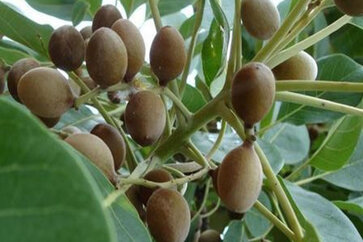


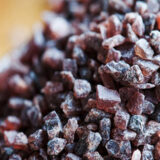



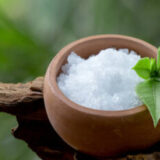

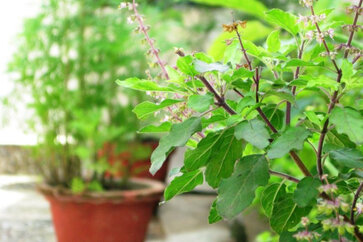





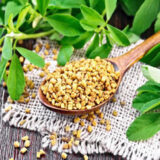





Ayurveda is one of the greatest epic of medical science. It is the base of all modern science. Lots of scientist are also believes that Ayurveda is most accurate solution for all deices.
We are marketing an imported herbal product called 'Praan – Quick Pain Relief Patch' in India. Although this simple and safe method of treatment is very popular in developed countries, awareness and habit are growing still at a lower scale in India for want of initiatives